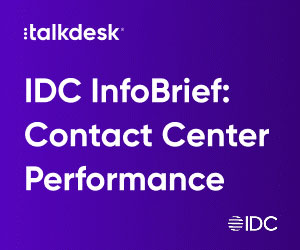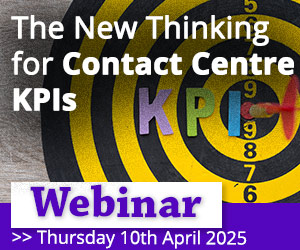Amazon Web Services has announced the general availability of AWS Entity Resolution, an analytics service powered by machine learning (ML) that helps organizations analyse, match, and link related records stored across applications, channels, and data stores.
AWS Entity Resolution uses customizable workflows that leverage rule-based and ML techniques to join related consumer, business, and product information.
Business analysts and developers can improve the fidelity of their data quickly with built-in, preconfigured workflows, or customize the workflows to fit their organization’s needs.
With AWS Entity Resolution, businesses can better understand how their data is related, matched, and linked and develop deeper customer insights, clearer supply chain data for improved operations, more relevant marketing campaigns, and improved complex financial investment decisions.
AWS also announced plans to add two entity resolution partner integrations with LiveRamp and TransUnion, as well as interoperability with the Unified ID 2.0 open source framework.
These integrations will enable customers to more easily translate or enrich their own records while better protecting their information and reducing data movement. Customers can get started with AWS Entity Resolution by visiting aws.amazon.com/entity-resolution.
Records containing information about customers, businesses, and products (e.g. product SKUs, UPCs, and manufacturer codes for the same product) are increasingly siloed in hundreds of different applications, channels, and data stores across multiple organizations.
For example, companies may want to link recent consumer interactions (e.g. ad clicks, cart abandonment, and purchases) with a unique ID, so they can better understand shopping patterns across applications (e.g. ad platforms, loyalty programmes, and ecommerce systems).
To link those records, companies typically use a combination of home-grown complex data pipelines and integrations with external partners, but reconciling records containing disparate or incomplete information is not easy.
In order to build these workflows, organizations have to spend costly developer resources, invest months of development time, and continuously update their data pipelines.
Adding ML for more accurate, predictive matching requires even more specialized expertise and additional development time to collect and normalize huge amounts of curated data, train and test matching models, and deploy the ML models.
Instead of building their own analytics solutions, some companies rely on external solutions to match their records, but this approach also comes with challenges.
Using readily available vendors requires building and maintaining custom data pipelines with each partner, copying sensitive data to external platforms with each additional integration—increasing the risk of data leakage—and constantly updating and validating those pipelines, which is costly and requires heavy lifting from both partners and customers.
As a result of these challenges, many organizations aren’t able to easily match, link, and de-duplicate records and are often unable to fully harness the insights of their data.
With AWS Entity Resolution, companies can more easily match and link related records stored across multiple applications, channels, and data stores in minutes using flexible and configurable workflows that can be customized with a few clicks, even when records contain missing or incomplete information.
In the AWS Management Console, a user can easily customize rule-based workflows for any kind of record-matching and accuracy needed, and can use preconfigured machine learning (ML) matching, without any expertise in entity resolution or ML models.
With AWS Entity Resolution customers can set a higher threshold to obtain exact matches, or a lower threshold to match data across a broader set of results.
For example, a financial services company can use AWS Entity Resolution to help prevent fraud by precisely matching transactions across a set of accounts, credit cards, and debit cards.
Or an airline can use AWS Entity Resolution to analyse and link millions of consumer interactions across ticketing, airport lounges, customer support, and loyalty programmes, even when some of the customer records contain partial information for a customer profile.
Using AWS Entity Resolution, customers gain a deeper understanding of how data is linked to deliver new insights, enhance decision making, and improve customer experiences based on a unified view of their records.
“AWS customers across every industry rely on accurate data for daily decision making to drive better business outcomes.
“Today, information about customers, products, or businesses is often fragmented and stored across organizations, making it difficult for companies to gain valuable insights to improve customer experiences, optimize their supply chain, and improve decision making without developing custom data integration and rationalization solutions, which are expensive to build and maintain,” said Dilip Kumar, vice president of AWS Applications.
“With a few clicks, AWS Entity Resolution makes it easy for organizations to match records and link workflows that are flexible, scalable, and easily connect to existing applications, enabling faster and more comprehensive views of their data to unlock its value and improve business outcomes.
“Together with the broad AWS portfolio of analytics solutions, AWS Entity Resolution makes matching and linking data from multiple data lakes and data stores easier, helping customers keep their data where it lives, and contributing to a zero-ETL future.”
Soon, AWS Entity Resolution will also add partner integrations with LiveRamp and TransUnion, as well as an integration with the open source advertising framework Unified ID 2.0, to make it easier for customers to translate or enrich their records with common industry identifiers.
AWS Entity Resolution will make it easier to relate commonly used industry identifiers with their own data while minimizing movement of data outside of AWS and eliminating the need to write custom code to translate or enrich their records with identity providers.
Customers who want to collaborate with partners in a data clean room such as AWS Clean Rooms can use the AWS Entity Resolution automated workflows to identify common data IDs across datasets and more easily connect records.
Together, these integrations make it easier for companies to analyse data with business partners for use cases such as supply chain optimization or advertising measurement, while helping protect sensitive information.
AWS Entity Resolution is generally available today in US East (Ohio), US East (N. Virginia), US West (Oregon), Asia Pacific (Seoul), Asia Pacific (Singapore), Asia Pacific (Sydney), Asia Pacific (Tokyo), Europe (Frankfurt), Europe (Ireland), and Europe (London), with availability in additional AWS Regions coming soon.
ActionIQ is an enterprise composable customer data platform provider solving complex data problems like audience segmentation, customer360, real-time personalization, and journey orchestration – helping brands activate data anywhere in the customer experience.
“We are excited to be an early customer of AWS Entity Resolution, as the service aligns with our vision to modernize the customer data landscape.
“ActionIQ’s platform, powered by AWS technology, is dedicated to arming marketers with seamless access to customer data and enhancing the overall customer experience for enterprise organizations,” said Justin DeBrabant, chief product officer at ActionIQ.
“During our early experimentation with AWS Entity Resolution, we were impressed with the flexibility to customize the workflows and how the service quickly hit industry-class benchmarks in terms of speed and match rates.
“AWS Entity Resolution will help marketers augment the value of their data and harness the ongoing transformation of the identity resolution and marketing technology space.”
Amazon Marketing Cloud (AMC) is a secure, privacy-safe clean room application from Amazon Ads that supports thousands of marketers with custom analytics.
“Today it can be challenging for marketers to prepare and analyse the signals used within clean rooms without heavy lifting,” said Paula Despins, vice president of Ads Measurement at Amazon Ads.
“Now Amazon Ads customers can use AWS Entity Resolution to simplify the process of preparing signals before analysing them in Amazon Marketing Cloud, for use cases like cross-channel measurement or custom audience activation through Amazon DSP.”
Best Western Hotels (BWH) is a global hotel brand with a mission to deliver trusted guest experiences. “Understanding our hotel guests and their preferences is incredibly important to delivering exceptional traveler experiences.
“To enable this, we must consolidate our data into a unified view of each guest, such that we can more effectively communicate, personalize, and provide support around the guest journey. However, consolidating disparate sets of data is challenging, as customer information is fragmented and lives across multiple repositories,” said Joseph W. Landucci, director of Technology Management at BWH.
“We are excited to be one of the first customers to test this new service and to incorporate AWS Entity Resolution workflows into our Guest Profile process.
“AWS Entity Resolution allows us to easily match and link these disparate records to create a 360-degree view of our customers, enabling us to deliver a more personalized guest experience at every touchpoint across our portfolio of hotels around the globe.”
LiveRamp is a leading data collaboration platform that helps businesses access, manage, activate and analyse data through a consistent identity framework.
“Identity resolution is a foundational requirement for companies to unlock the full value of their data, a critical need for marketing teams, analysts, and model builders focused on customer insights,” said Noel McMichael, vice president of Commercial Cloud, LiveRamp.
“LiveRamp’s partnership with AWS is focused on enabling privacy-centric identity workflows, and as a lead AWS Entity Resolution integration partner, we look forward to delivering even more value to companies in the cloud by advancing customer intelligence, partner collaboration, and better business outcomes enterprise-wide.”
Merkle specializes in the creation and delivery of unique and relevant customer experiences that help drive performance across all media and devices.
“We have successfully used AWS Entity Resolution to perform both deterministic and machine-learning based matching of users across multiple datasets and with high match-rates, allowing us to enhance customer experiences with more complete views of their profiles,” said Oscar Wooley, head of Data Solutions, Merkle.
“Moreover, we are now able to drastically improve the level of automation for our clients, allowing them to focus on data activation and insights rather than being caught-up on data preparation.”
TransUnion is a global information and insights company that makes trust possible by ensuring each person is reliably represented in the marketplace.
“Despite continued investments in new technology and data, marketers still struggle to understand their customers and connect their interactions,” said Ryan Engle, TransUnion’s vice president of Identity Solutions and Platform Integrations for its TruAudience marketing solutions.
“We look forward to applying the power of our solutions through AWS Entity Resolution to help brands and publishers leverage their data for insights, audience creation, and more while reducing data movement.”
Unified ID 2.0 is an open-source digital identity framework that aims to provide greater transparency and interoperability.
“In the dynamic world of advertising, accurate data is a cornerstone for success, which is why we’re excited that AWS is expanding its capabilities through AWS Entity Resolution,” said Samantha Jacobson, chief strategy officer, The Trade Desk.
“We look forward to integrating the Unified ID 2.0 framework with AWS Entity Resolution to enable AWS customers to expand their first-party data advertising tactics and deliver omnichannel campaigns across devices.”
Author: Robyn Coppell
Published On: 28th Jul 2023 - Last modified: 1st Aug 2023
Read more about - Industry News



































